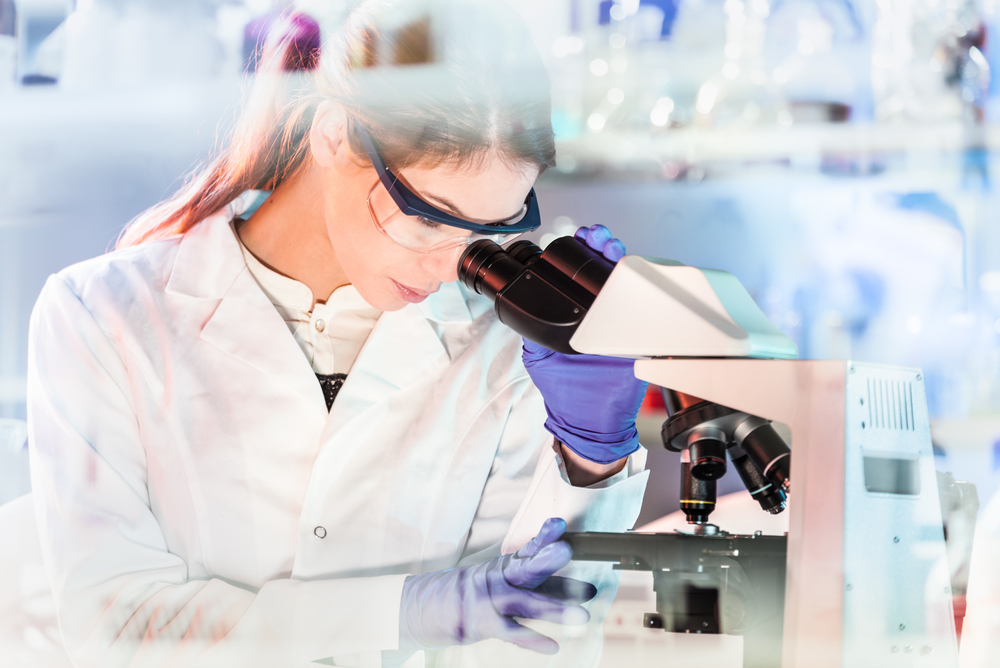TBK1 Enzyme Seen to Clear Mutant Huntingtin Protein in Disease Models

An enzyme called TANK‐binding kinase 1 (TBK1) can lower levels of the mutant huntingtin protein — which underlies the development of Huntington’s disease — and prevent its aggregation in cellular and animal models of the disease, a study reports.
Data showed that TBK1 is able to do this by making a chemical modification called phosphorylation to a specific region of the protein.
According to researchers, these findings may lead the way to new therapies for Huntington’s based on TBK1.
“We believe that this represents a viable target for the development of possible treatment of Huntington’s disease,” Hilal Lashuel, PhD, a professor at the École Polytechnique Fédérale de Lausanne (EPFL) and senior study author, said in a news story.
These findings were reported in the study, “TBK1 phosphorylates mutant Huntingtin and suppresses its aggregation and toxicity in Huntington’s disease models,” published in The EMBO Journal.
Huntington’s is a genetic neurodegenerative disorder caused by the excessive number of repeats (more than 35) of a portion of DNA, called CAG triplets, within the sequence of the HTT gene.
This high number of repeats can affect the structure of huntingtin — the protein encoded by the HTT gene — causing it to misfold and form toxic aggregates that gradually accumulate inside neurons, disrupting their function, and ultimately leading to their death.
In recent years, scientists have been trying to find ways to either lower levels of the mutated form of huntingtin, or prevent it from forming the toxic protein aggregates that destroy neurons over time.
A group of researchers at the EPFL’s Brain Mind Institute and their colleagues found that the TBK1 enzyme can accomplish both tasks by making certain chemical modifications in specific regions of the mutated protein.
TBK1 belongs to a class of enzymes known as kinases, which work by adding phosphate groups to different types of molecules found inside cells (phosphorylation). Although previous studies have shown that the addition of these phosphate groups to certain amino acids (the building blocks of proteins) in the huntingtin sequence can prevent the formation of toxic aggregates, scientists still did not know which specific kinases could be involved in this process in living cells.
After screening about 300 different types of kinases that could potentially phosphorylate huntingtin, the team led by Lashuel focused on TBK1 due to its high specificity and efficiency at phosphorylating both mutated and normal versions of huntingtin at a specific amino acid, called serine 13, in cellular models of Huntington’s.
Serine 13 is one of the amino acids making up the protein sequence of huntingtin that has been shown in the past to prevent the protein from forming aggregates, or clumps, when phosphorylated.
Researchers also found that when they forced cells to produce high amounts of TBK1, this increased the levels of mutated huntingtin that was phosphorylated on serine 13, consequently preventing protein aggregation.
The addition of a phosphate group to this specific amino acid also promoted the destruction of the mutated huntingtin protein — through the activation of a natural cell self-degradative process known as autophagy — before it had the chance to form harmful protein aggregates.
Additional experiments performed on lab-cultured neurons and in the round worm Caenorhabditis elegans, an animal model often used to study neurodegenerative disorders, confirmed that TBK1 was able to protect neurons from the toxic effects of mutated huntingtin.
“These findings suggest that upregulation and/or activation of TBK1 represents a viable strategy for the treatment of HD [Huntington’s disease] by simultaneously lowering mutant HTT levels and blocking its aggregation,” the researchers wrote.
According to Lashuel, they may also be relevant in the context of other neurodegenerative diseases caused by the accumulation of toxic protein aggregates in which TBK1 also is seen to play a role.
“We are very excited about these findings. TBK1 has also been shown to regulate the clearance and degradation of proteins implicated in other neurodegenerative diseases. Mutations in TBK1 have also recently been linked to ALS and result in impaired autophagy, which leads to the accumulation of aggregates,” Lashuel said.
“Our goal is to find small molecules or drug pathways and to develop these for multiple neurodegenerative diseases,” he added.






